Burned by the Hot Fires of Hell: The Deadly Spectacle of the Cultural Revolution in Amdo
An alphabetic poem by Akhu Tsultrim Sangpo (1932-2021)
Submitted by the Amdo Translation Collective (ATC)
“There is no greater agony than bearing an untold story inside you” –Maya Angelou
Two members of the Amdo Translation Collective (ATC) met Akhu Tsultrim Sangpo at his home in Amdo (Ch. Qinghai province) in the summer of 2018. A retired lay official who decided to become a monk in his remaining years, Akhu Tsultrim Sangpo had heard that we were interested in stories of the tenth Panchen Lama’s 1980s post-prison tours of Amdo. He sent word through his daughter for us to come to his tiny home next to a quiet, rural monastery west of Xining. We were extremely fortunate that he chose us as his listeners. Akhu Tsultrim Sangpo saw our presence as an opportunity, as he neared the end of this life, to share his life story, which he took to be intertwined with that of the tenth Panchen Lama. He also wanted to articulate to a wider audience his long-suppressed sentiments about the, to him, shockingly absurd spectacle of state violence and expropriation that he and others had experienced during the Communist political compaigns of the Maoist years (1958-1976) in Amdo Tibetan regions. As soon as we were seated, Akhu Tsultrim, leaning forward, his serious face and intense, intelligent eyes fixed on us, took control of the conversation for the entire two hours we were together.
Akhu Tsultrim’s life spanned the tumultuous decades of socialist transformation in Tibetan regions of the PRC. He was born in 1932 in a poor Nyingma household in a semi-nomadic region of northeastern Amdo. He described himself as from the start an “unfortunate” person, whose mother died when he was three. As a sickly child, he learned to chant strengthening prayers and thereby began to gain literacy in Tibetan. He never attended secular schools, but studied Nyingma ritual practices in his home village and then joined a small monastery where he continued to learn Tibetan. He said when the Chinese Communist Party (CCP) “arrived” in his home region in 1950, having defeated Chiang Kai-shek, he was 18 years old, and his class status fit the profile of people that CCP work teams wanted to “raise up and make officials”. He had felt that the CCP’s socialist agenda of helping poor Tibetans like himself was a good one. By the mid-1950s, he was promoted to the level of county official, made a CCP member and given the post of vice secretary of the Party Youth Brigade. Because he knew Tibetan, he was then made the head of a prominent county media office.
In 1957, however, Akhu Tsultrim made a decision that shaped the rest of his life. As rural Tibetans’ rebellions against CCP-led land reforms were intensifying in Amdo, his CCP minders told him that he could no longer practice Buddhism and that he should get rid of all his Tibetan Buddhist texts. If he renounced his faith in Buddhism, they assured him, he would be promoted to provincial officialdom. But, he said, to do so would have been “a misfortune on top of misfortune.” He described a night of anxious reflection in which he realized that he had made a mistake in joining the CCP and that he had to get out. He begged his CCP patron to expel him from the Party, but the man, who had lost face, refused to do so, insisting he attend the nationalities training school in Lanzhou instead. But Akhu Tsultrim refused to go. He stayed home and continued his Buddhist practice, an act that got him branded a “religionist” during the 1958 “Democratic Reforms,” in which he was swept up in the CCP’s military crackdown on armed rebellions across Amdo. He described how he was “dragged” down to Xining, hands tied and crammed in the back of a truck with other laymen, monks and lamas. They were part of a convoy of prisoners, escorted by truckloads of armed Chinese soldiers, who joined thousands of others in prison in Qinghai’s capital city. He said he then spent six years in a labor camp in Qilian county as many, many people died of starvation and torture around him–until he actually fled on his own and returned home where he negotiated his own release, right before the launch of the devastating Cultural Revolution (1966).
Despite his release from the labor camp, Akhu Tsultrim had been “hatted” as a “counterrevolutionary” because, CCP officials told him, his level of “superstition” was extreme: “your fault is that in your heart, you have faith in Buddhism,” they said. He therefore could not return to any official work. He spent years doing the dirtiest of manual labor in the county town, and when the Cultural Revolution campaigns of the Red Guards came to their region, he kept his head down at home and studied Tibetan medicine texts (because overtly Buddhist texts were forbidden), teaching himself to read pulses and collect and mix herbal medicines. In the mid-1970s, after over fourteen years of self-study, CCP officials assigned him to work as a rural “barefoot doctor.” He then traveled to remote areas, providing moxibustion treatments and preparing herbal medicines.
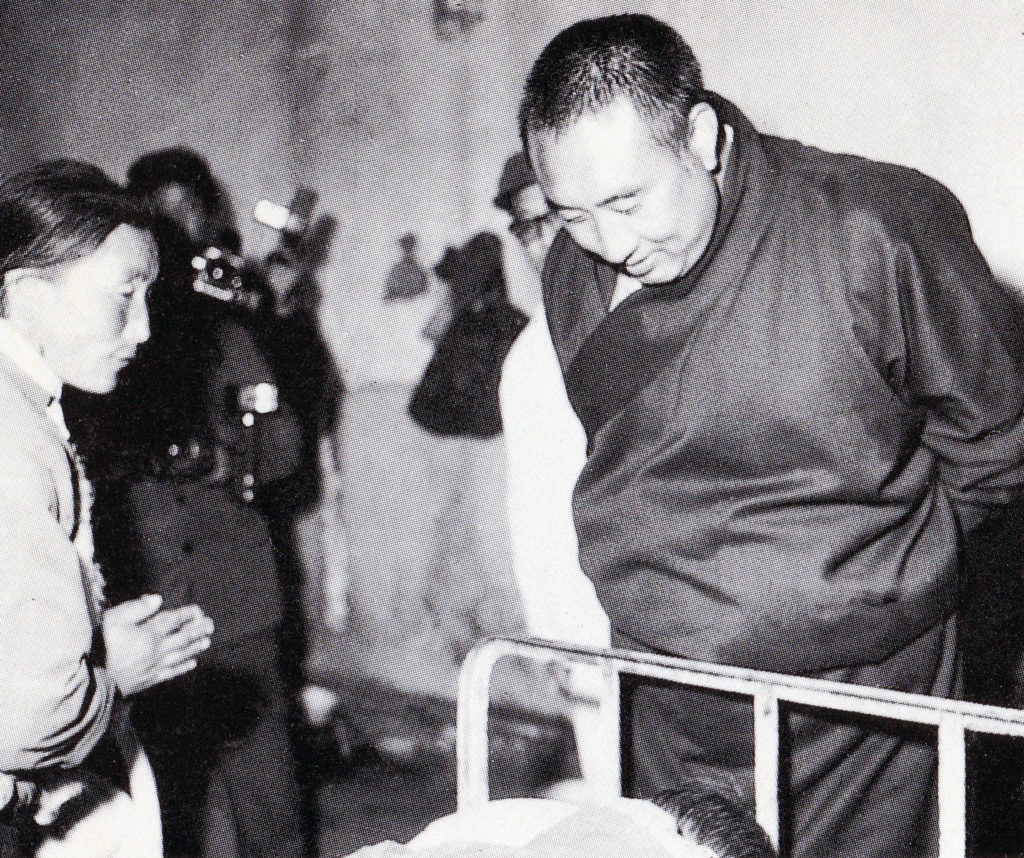
That was why, after the death of Mao Zedong and the rise of Deng Xiaoping’s “Reform and Opening Up” policies, Akhu Tsultrim’s Cultural Revolution-era “hat” was removed and he was made head of the new Tibetan hospital in the prefecture seat. Akhu Tsultrim’s hospital, which was supposed to provide Tibetan herbal medicine treatments to locals, was a bare-bones clinic with four doctors, two nurses and a few workers. Meanwhile, in 1977 the 38-year-old tenth Panchen Lama had been released from detention in Beijing, where he had been held and periodically “struggled” for his 1962 “70,000 Character Petition” criticizing the atrocities of the Maoist “Democratic Reforms” in Tibetan regions. In 1979 Deng Xiaoping helped reinstate him as Vice-Chair of the National People’s Congress, promoting him as the ideal minority official for winning back Tibetans’ trust in the CCP. That status allowed the Panchen Lama to negotiate permission to return to Amdo for a series of fact-finding tours among Tibetans and other minorities there. Akhu Tsultrim told us he had just opened the hospital on October 1, 1980, and just a week later, the tenth Panchen Lama arrived there while on one of his first Amdo tours.
Translators’ Introduction to the Poem
Akhu Tsultrim’s account of his life story culminated in the watershed moment of his life, his unexpected face-to-face meeting with the Panchen Lama at Akhu Tsultrim’s newly opened Tibetan hospital in 1980. It was his account of that life-changing event that ultimately prompted him to share with us, for the first time ever, the alphabetic poem (Tib. ka rtsom, ཀ་རྩོམ་) he had secretly composed back in 1970 during the height of the Cultural Revolution in Amdo, as a scathing criticism of that Maoist movement.
A Tibetan alphabetic poem is a 30-line poem, in which each line starts with a word that is a letter of the Tibetan alphabet, taken in traditional order. The famous Amdo Tibetan Buddhist iconoclast Gendun Chophel had raised the profile of that genre of poem as a medium of critique in the 1920s when he used it to sarcastically criticize what he saw as widespread corruption among Geluk Buddhist monks at Labrang monastery. At a time when Red Guards could scour houses for minute signs of disloyalty, Akhu Tsultrim must have written his own alphabetic poem at great risk to himself, somehow hiding it for decades until finally revealing it to us. He talked us through each nine-syllable line of the poem, explaining and dramatizing its metaphors by physically demonstrating the absurdly humiliating ways that Red Guard activists (including Tibetans) had treated him and others labeled counterrevolutionaries.
Akhu Tsultrim’s life story positioned his one-on-one meeting with the Panchen Lama in 1980 as the culmination and rectification of his horribly traumatic experiences as a wrongly accused “counterrevolutionary” during the Maoist years. He depicted himself as a straight-talker all along, someone who, like the Panchen Lama, refused to compromise either his vision of the truth or his Buddhist devotion. Thus, he said, when he first learned of the Panchen Lama’s release, he was overjoyed, not only for the lama, but for himself–he and the lama’s fates were intertwined. Neither of them had done anything wrong, he insisted, and now the CCP was finally telling the truth. Akhu Tsultrim’s language became vivid when he described his remarkable, unplanned meeting with the Panchen Lama at the hospital a few months later. That meeting, he recounted, was foisted on him by prefecture officials because the lama had insisted on visiting the very few Tibetan organizations in the prefecture, challenging all official attempts to block him.
Unbeknownst to Akhu Tsultrim, he was expected to give the lama a report on the brand-new hospital. Instead, like the Panchen Lama’s own petition to central Party leaders in 1962, and not unlike his narrative to us years later in 2018, in that room in 1980 crowded with regional elites, Akhu Tsultrim launched into an uncensored account of the atrocities and deprivation Tibetan communities had endured during the Maoist years in their region. That, he told the Panchen Lama, is the reason our Tibetan hospital is in such a sorry state now. The presence of the Panchen Lama, straight-talker and truth-seeker, had sanctioned Akhu Tsultrim’s own capacity for straight talk. This is also where his deep, affective commitments came to the fore: “Of all those who love the Panchen,” he insisted, “I really love him. In my heart [I felt] that the Panchen was not a person like us, of lamas he authentically… He had spent many years in a Beijing prison over [his petition about] Tibetan affairs..he had a huge heart, a huge heart. His mind was extremely courageous.”
Then Akhu Tsultrim brought out his cherished photo of himself and the Panchen Lama at that meeting, taken at the very moment of his own petition to the lama: “look at my face,” he instructed us, “I am angry. Why am I angry? It wasn’t because I could not speak my mind to the Panchen, it was because I was enraged”. He meant that in the lama’s presence he felt years of repressed rage and anguish about Maoist officials’ brutal treatment of himself and other Tibetans. He went on, his eyes watering:
I did not like the way the CCP had acted, right? 1958, and the Cultural Revolution, those were extremely miserable years. As for those, at that time in Tibet there were no…there were no cameras. If there were photos of those [horrible] things in Tibetan regions, you would not only feel, “a:hhh…a:hhhh…,” they would be nothing like images you see on TV today. You young people would have no way of knowing this.
He abruptly paused for several seconds, as if making a momentous decision, and then finally said, “I have a little something,… it’s okay for me to give it to you, I have never shown it to anyone.” That was when he took out a small, worn notebook and showed us his hand-written alphabetic poem from 1970.
Akhu Tsultrim framed the poem to us as an indictment of the CCP-led revolution and all who had participated in it, while grounding himself in his lifelong, sincere faith in the Buddha Dharma. For the poem’s author, Buddhism is what guarantees all fortune and “rightness” in the world. By contrast, the Cultural Revolution is a time of literal sociocosmological upheaval, the much-prophesied end times or ultimate destruction of the Buddha Dharma on earth.
A note on the translation:
We took seriously the importance of capturing form as well as content in translating Tibetan poems, such that we could maintain the spirit of Akhu Tsultrim’s original. A Tibetan alphabetic poem presents specific challenges, however, given the particularity of the Tibetan writing system, its quasi-sacred relationship to Tibetan literacy and Buddhist identity, as well as its particular form: thirty letters versus English’s twenty-six. And Tibetan uses a syllabary writing system, in which the symbols include an inherent consonant, and thus each can also stand for a single-syllable word. By contrast, English uses an alphabet, in which symbols represent phonemes and thus cannot stand for words on their own. We therefore did not try to convert the Tibetan syllabary form to one following the English alphabet, as some translators have done. Instead, we tried to maintain a link with the Tibetanness of the original by preserving Akhu Tsultrim’s four-line stanzas, with each line announced by the letters of the Tibetan system. We also kept separate his final two-line stanza of the last two letters ཧ་ (ha) and ཨ་ (ah), which serve to express the writer’s ultimate emotional response to the horrific situation he is experiencing.
Author’s Introduction to the Poem
So I wrote this poem based on the thirty letters of the alphabet. This is about that year 1970. In 1970, Deng Xiaoping had not yet risen up, right? He did so in 1980. I wrote this in 1970 in [our county town]. 1970 was the year when it was as if the time of Yama’s Citadel had arrived. By “Yama’s Citadel” I mean that it was as if we had been carried in the next life to the King of Hell’s realm. In Tibetan Buddhism that’s how it is, it is called Yama’s Citadel. It is said that of all [the lower realms of] hell-beings, it contains [the lowest realms of] hungry ghosts and animals, it is the realm of hell-beings and hungry ghosts, that’s why it’s called Yama’s Citadel. It was that year [of 1970] when it became like Yama’s Citadel, when due to the Cultural Revolution, they made our county town like the realm of the King of Hell.
That was the place where many [people] in the villages gathered and struggled those who had to wear so-called “hats.” People had to rise up [e.g., they had to act like they were revolutionaries], right? At that time, when the officials passed near rural villages like this, the hatted ones had to kneel with their hands like this [on their heads], their heads bowed. That’s how they had to stay. You have never seen anything like that. They had to stay like that. I will show you. [He got up to demonstrate the position to us, kneeling with his head down]. That was just the hatted ones. But they were only one category [of such person]. There were a lot of them.
That was the time in which I wrote this. But I have not shown it yet, up till now I have never shown it to a single person. Today I showed it to you two! [chuckling].
The Poem
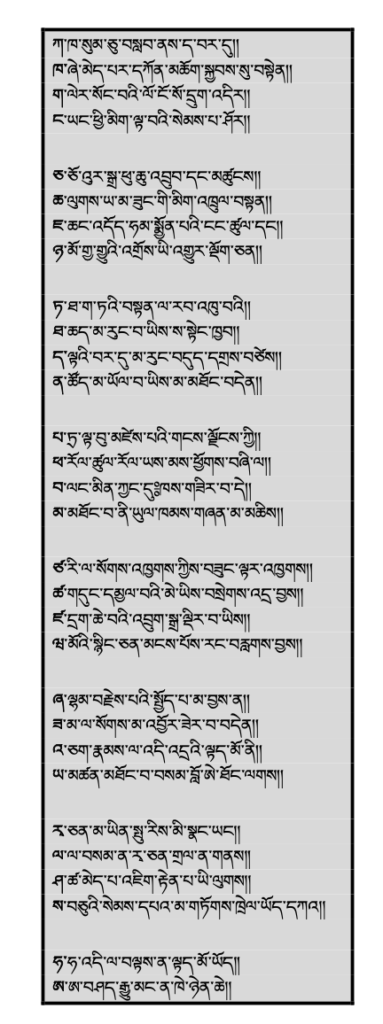
ཀ་ Having studied the alphabet, and up till now
ཁ་ sincerely1 taken refuge in the Three Jewels
ག་ from my slowly passed thirty-sixth year,
ང་ I can’t help but look back again2.
ཅ་ With a clamorous din like the roar of a spring river3,
ཆ་ they flaunt outrageous, deceptive appearances4.
ཇ་ Living like madmen craving tea and beer5,
ཉ་ they are fickle like the intermittent flickering of a fish6.
ཏ་ The scourge of their keen contempt for
ཐ་ the Tathagata’s teachings fills the land7.
ད་ Now those hateful demon enemies cavort8
ཉ་ and the immature young will not see this truth9.
པ་ Across the beautiful, patra-like Snowland10,
ཕ་ in the four directions, here, there, up and down,
བ་ we are not oxen but we are tormented by torture11,
མ་ and there is no region where this is not seen12.
ཙ་ It is as if we are frozen like Tsari and other peaks captured by the ice13.
ཚ་ It is as if we are burned by the painfully hot fires of hell.
ཛ་ The intensity of this thunder clap has caused14
ཝ་ many timid foxes to destroy themselves15.
ཞ་ Truly, if we refused to turn things upside down16,
ཟ་ we could not get such things as food17.
འ་ This spectacle before us,
ཡ་ have you given thought to this astounding sight?
ར་ No horns and no fur on our heads but18
ལ་ some act like horned beasts19.
ཤ་ Their heartlessness is the way of earthly beings20
ས་ and none but a Buddha is trustworthy21.
ཧ་ Ha ha! If you look at it, it’s just a spectacle,
ཨ་ Ah ah! But to say too much would be unsafe.
- As for the mouth and the mind, this is not about the mouth saying pretty things [eg., insincere talk], right? ↩︎
- When I looked back, back, back, I despaired. ↩︎
- By “spring river” I mean the river in a valley that runs down through a steep ravine, like rushing melt water, that’s what “phu chu” means. It’s really loud, right? So by “clamorous din” here I’m talking about, of all sentient beings, the chaotic roars which stand for their public beatings of the masses. ↩︎
- That’s the appearance they took on. They shaved off all women’s [long] hair. They cut it off up to here [points to nape of neck]. Men had to have their hair [short and] parted [in the middle]. Having cut off women’s hair, we Tibetans’ ways of doing hair, before, we braided hair, so those too, those [short] hairstyles were all completely different, so they were displaying outrageous, deceptive appearances. ↩︎
- They drank tea and beer like madmen, the local officials were like madmen. [Translator’s note: the beginning of this line could be a partial quote of Gendun Chophel’s alphabetic poem about Labrang.] ↩︎
- So in general they never really did anything, they were like a fish who swims like that in the river, in that way, they were fickle and deceitful. ↩︎
- The Tathagata is Sakyamuni, the teacher of Buddhism. As for “keen contempt for the teachings”, by “rab” I mean that this was not just a mediocre hatred. It was an extreme contempt. So I say it was “keen contempt”. Here I mean that [this hatred], this wrongness had pervaded the land. ↩︎
- I’m saying that those officials, those evil demons and enemies, have done great harm. ↩︎
- I’m talking about the truth that those immature ones [at the time]… all of this will pass on, and the years will pass, and [they] will not see it. That’s what I meant by the unseen truth, that ‘you young people [in the future] will not have seen this’, that’s the unseen truth. ↩︎
- By “patra,” I meant those beautiful and auspicious Buddhist designs made by drawing lines, right? [Trans. note, one of the eight auspicious symbols, the “endless knot,” often drawn on the ground to the sanctify a space in monasteries. The comparison to the patra symbol evokes the overlapping mountains]. I mean that the Tibetan snowland is as beautiful as those designs. ↩︎
- By “we are not oxen” I was talking about the torture and brutality of the suffering of an ox, that torment. ↩︎
- This is about that torture, the torment of that torture. This kind of place, there was no such place, there was no place that was free of this torture. There was no country like that. It was all across Tibetan regions. That’s what I was talking about. [Trans. note: the double-loop diacritic in the Tibetan is the conventional, mantra inscription for torture]. ↩︎
- Tsari means the peak of that Himalayan mountain called Tsari. The peak is held by a glacier, and it won’t melt in the summer, it is as if it has been captured. ↩︎
- [The sudden violence] was so intense that it was like a thunder clap. ↩︎
- Like foxes, all the very timid ones, they all, there were many who killed themselves. There were many who committed suicide in Tibetan regions. It wasn’t a few. They destroyed themselves. [Trans. note: Foxes are conventionally opposites of lions as metaphors for the timid and fearful] ↩︎
- [Trans. note: in the Tibetan he uses a metaphor of hats worn on feet and shoes worn on heads] By this I mean when the two, hats and shoes, are exchanged, such that the hat goes on the feet, and the shoes go on the head, and they are worn like that on head and feet. Here I’m making a metaphor, saying if you didn’t participate in turning things upside down… ↩︎
- Here I mean that it is true that [such a person] would not obtain food to eat. ↩︎
- We Tibetans don’t have horns or fur on our heads. ↩︎
- Sometimes when you think about it, some in fact should have horns because they live like beasts. I’m saying that’s how [such people, e.g Red Guards and CCP officials] appear, and the rest of us, actual humans have no rights. ↩︎
- By “heartless,” here I’m saying that they [e.g., Red Guards and CCP officials] have no mercy or compassion. To say one is heartless is to say they have no mercy. These are the ways of the mundane world [vs. the sacred realms of the Buddhas and Bodhisattvas]. ↩︎
- Heroes of the ten realms are Buddhas. It is hard to feel shame. So if you adulterate the good [e.g., those who were complicit in the violence], and then later try to go back to doing good, it is very hard. ↩︎
The Amdo Translation Collective // མདོ་སྨད་ལོ་ཙྭ་མཐུན་ཚོགས།
The Amdo Translation Collective (ATC) is an international group of Tibet scholars who work collaboratively on translating texts and media from early Post-Mao and contemporary Amdo into English, in order to make them accessible to larger publics. Their translation philosophy is to preserve as much as possible of the content, tone and form of the Tibetan originals while crafting English language “siblings” that are accessible and poignant to readers who are not literate in Tibetan. In recent years, they have been focusing on translating texts related to the life and times of the tenth Panchen Lama, Lobsang Trinley Lhundrub Chokyi Gyaltsen (1938-1989).

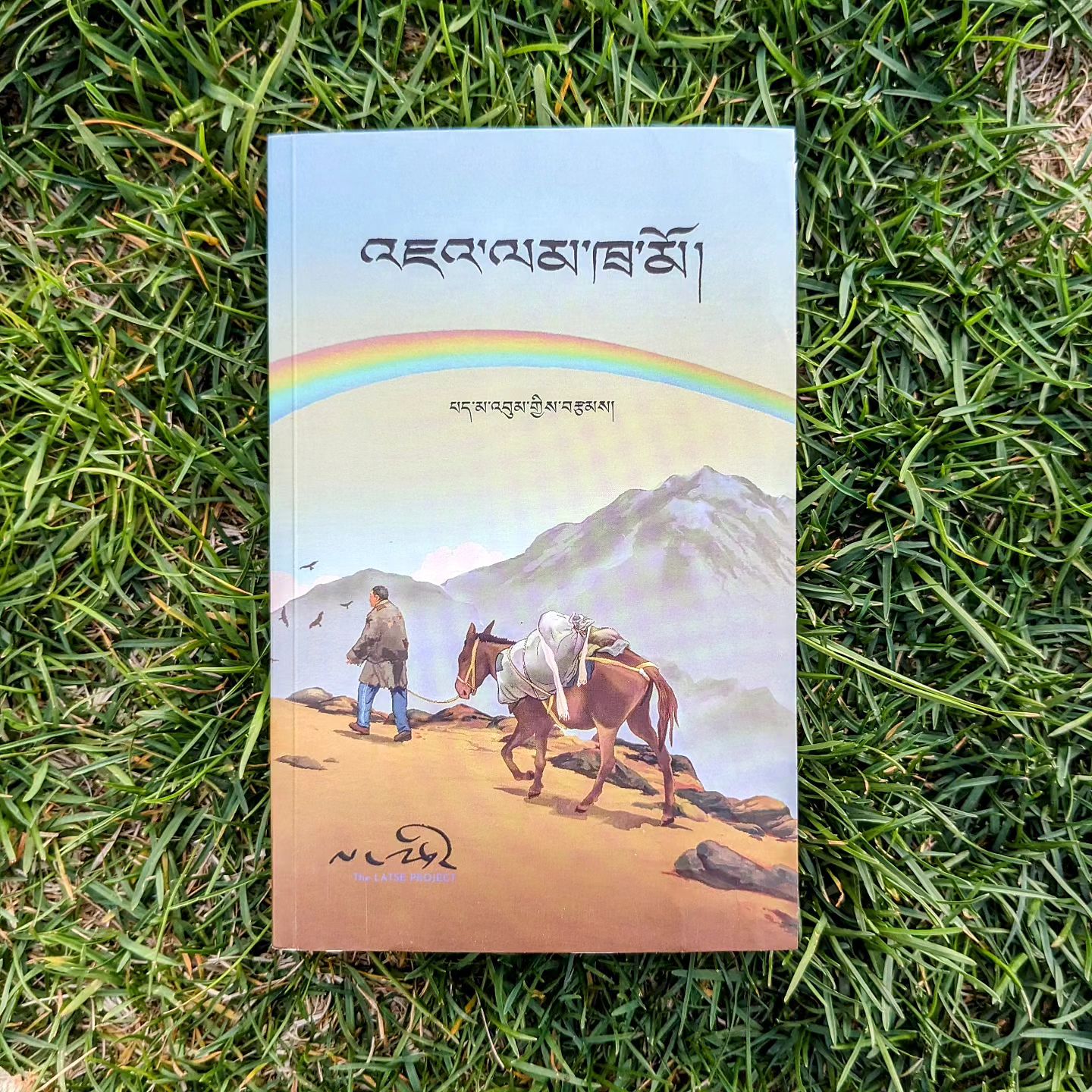
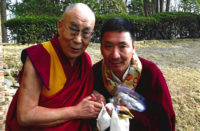
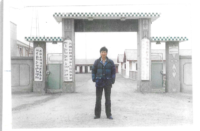
Follow Us!